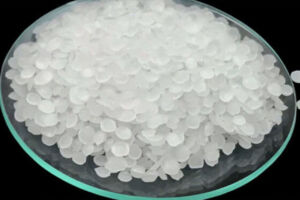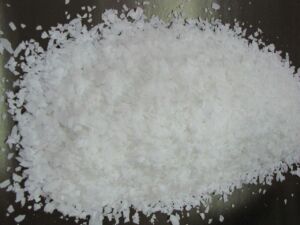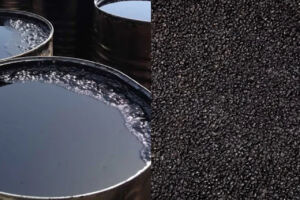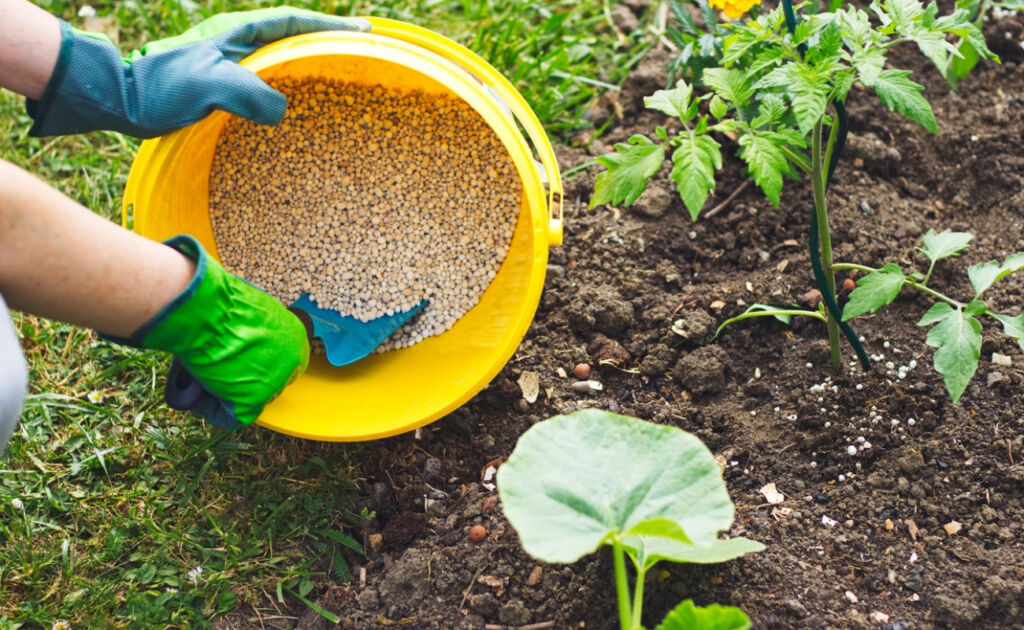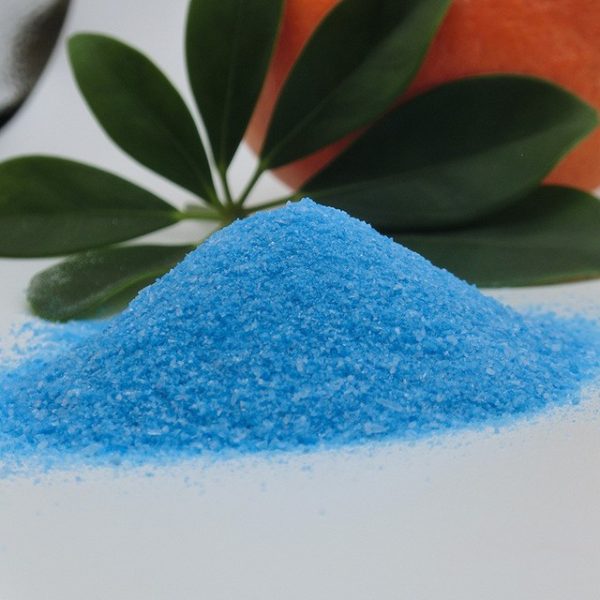Fertilizer is simply a multi-vitamin and food aid for plants, which the farmer uses to strengthen and process more crops. It also benefits soil nutrition, which is divided into three general categories based on its characteristics, origin, and ingredients.
Fertilizer is a mixture rich in essential nutrients for plant growth, which is produced in different types. In addition to plant growth, fertilizer can help improve the condition of the soil and strengthen the soil for more harvest.
Fertilizers are used to help grow crops and gardens. Whether for a small garden of flowers and plants or a large farm with thousands of hectares of crops, a wide variety of these compounds are currently produced.
It is interesting to know that at the end of the 20th century, the increase in the use of nitrogen fertilizers was an important component of increasing the productivity of conventional food systems (more than 30% per capita). But according to the IPCC special report on climate and land change, these practices are the main driver of global warming.
History of fertilizer use
Soil fertility management has been of interest to farmers for thousands of years. The Egyptians, Romans, Babylonians, and Germans were the first to use minerals or fertilizers to enhance the productivity of their farms.
The modern science of plant nutrition was started in the 19th century by the German chemist Justus von Liebig. Then, in 1837, John Bennet Laws, an English entrepreneur, began to test the effects of different fertilizers on plants in growing pots, and a year or two later, these experiments were extended to crops in this field.
One of the immediate consequences of his work was that in 1842 he produced artificial fertilizers by treating phosphates with sulfuric acid. So he was the first to establish the synthetic fertilizer industry.
The mechanism of fertilizer effect in plant nutrition
Fertilizers enhance the growth of plants and this goal is met in two ways, the addition of fertilizers provides nutrients required for plant growth and also increases soil efficiency by improving water retention and aeration. Of course, many fertilizers emphasize the nutritional aspect and provide different proportions of micronutrients, which are described below.
The three main micronutrients needed by plants include:
- Nitrogen (N): leaf growth
- Phosphorus (P): development of roots, flowers, seeds, fruits;
- Potassium (K): Stimulates stem growth, water movement in plants, promotes flowering and fruiting.
- Three secondary micronutrients: Calcium (Ca), Magnesium (Mg) and Sulfur (S).
Other micronutrients that are sometimes used include: copper (Cu), iron (Fe), manganese (Mn), molybdenum (Mo), zinc (Zn), boron (B). Of occasional importance are silicon (Si), cobalt (Co) and vanadium (V).
The importance of using fertilizer
Since it is very difficult to supply the nutrients needed by the world’s population in a natural way, the importance of using fertilizers will become clear. Currently, the loss of soil fertility, pests and lack of nutrients have led to a decrease in the production of agricultural products, and this has increased the importance of agricultural fertilizers.
Fertilizers can be important to plants in the following ways:
Fertilizers increase plant resistance to pests. This reduces the use of insecticides and herbicides, resulting in the production of healthier crops and reduces crop diseases.
Fertilizers improve the water holding capacity of plants and increase root depth. Potassium in fertilizers strengthens the straw and stems of plants. Phosphorus in fertilizers helps in rapid root growth and seed formation in plants. The nitrogen contained in these compounds promotes the growth of plants and contributes to the green color of plants.
Fertilizers used in agriculture
Mineral fertilizers
There are chemical fertilizers that contain nutrients for the growth of crops and are divided into the following types:
Nitrogen fertilizers
The main ingredient of nitrogen fertilizers is nitrogen, which has been used in different forms in the production of fertilizers.
These compounds contain nitrogen, which is necessary for the development of crops. Nitrogen is the main component of chlorophyll, which maintains the balance in the process of photosynthesis. It also forms part of the amino acids found in plants and helps in protein synthesis. Nitrogen fertilizers improve the production and quality of agricultural products.
Phosphorous fertilizer
The efficiency of this fertilizer depends on the phosphorus content, methods of use, characteristics of the soil and the type of crop. Phosphorus in cell protoplasm plays an important role in cell growth and proliferation. This fertilizer is beneficial for the growth of plant roots.
Organic fertilizers
They are natural fertilizers obtained from plants and animals. This fertilizer enriches the soil with essential carbon compounds for plant growth. Organic fertilizers, which are among the factors that increase soil organic matter, enhance the reproduction of microorganisms and change the physical and chemical properties of soil, and are considered as one of the most important green nutrients. Organic fertilizers can be prepared from agricultural waste, livestock waste, industrial waste and municipal sludge.
All kinds of organic fertilizers
Organic fertilizers have different qualities and as a result, the effectiveness of each one on the soil is different. There are three types of organic fertilizers.
- Manure
- Green Manure
- Compost
What is animal manure and what are its advantages?
Since ancient times, farmers have realized that where there are animal excrement such as horse, cow, sheep and chicken, the plant can grow better and more. And after that, it is always used as animal manure for the growth of plants. Today, human fertilizers have a special and important place among farmers and are used

In addition to providing plant materials, animal manures have unique properties for soil, such as increasing permeability and water retention, raising pH, proper aeration, and increasing soil biological activity.
Green Manure
One of the methods from the past, in increasing soil fertility, is that before planting the main crop, another type of plant is planted, and when it grows and turns green, they harvest it.
In fact, the purpose of using this method is the productivity of the benefits of the planted plant, otherwise no product will be harvested from it, and only better conditions for planting the main product and the physical properties of the soil will be provided.
The cultivated plant should have fast growth characteristics, the minimum amount of water and fertilizer required, as well as full of foliage and soil materials to create more greens.
Compost
Compost or posal is the same combination of animal and vegetable waste that is created through various processes and conditions governing it. Composting is one of the oldest methods of recycling, where municipal waste, sewage and other organic materials are decomposed and used as fertilizer in agriculture.
This type of fertilizer is excellent in horticulture, agriculture, erosion control and soil improvement, wetland construction, landfill cover, and is considered a natural pesticide.
Bio-fertilizer
This category of fertilizers uses useful microorganisms for plant growth and soil fertility without pollution and damage to the farm ecosystem and environment. Based on the type of microorganism used, biofertilizers are divided into bacterial, fungal, algal, actinomycete and effective microorganism.
Fertilizer
Chemical fertilizer should be considered one of the most common and, in a way, the main type of fertilizer among farmers since World War II and the reason is easy access, use in small volume but higher efficiency, ease of working with it, and lower price than other fertilizers. Chemical fertilizers are composed of minerals that are easily decomposed and absorbed and are industrially produced and supplied in various forms such as powder, granules, solution and gas.
Nitrate fertilizer
Nitrate fertilizers contain nitrogen in the form of nitrates. These types of fertilizers are preferred because they are easily soluble in water and are quickly available to the plant. In a waterlogged and wet situation, the constituents of nitrate fertilizer are washed and become available to the plant in gaseous form. Sodium nitrate, calcium nitrate, and potassium nitrate are among the nitrate fertilizers used all over the world.
Ammonia fertilizers
This category of fertilizers contains nitrogen in the form of ammonia. Ammonia fertilizers are resistant to washing, so they can also be used during irrigation. Ammonia fertilizers, like nitrate fertilizers, are easily soluble in water, but they are not readily available to the plant, therefore this type of fertilizer is suitable for low growth and long-term plants. Among the available ammonia fertilizers are ammonium sulfate and ammonium chloride.
Ammonia nitrate fertilizers
These types of fertilizers include both nitrate and ammonium; Such as, ammonium nitrate and calcium ammonium nitrate.
Amide fertilizers
Amide fertilizers are a type of chemical fertilizers that are easily soluble in water and are quickly decomposed by microorganisms in the soil. These types of materials are first converted into ammonia and then into nitrate and are used by plants.
Urea fertilizer is a nitrogen source that has a low price and the ratio of NPK in solid form is 0-0-46. Another fertilizer that has a high urea concentration is urea ammonium nitrate. UAN is a liquid fertilizer that contains 28-32% nitrogen.
Urea is hydrolyzed in the soil and changes to ammonia and dioxide and is used in bulk to feed agricultural products. Although urea is produced naturally in humans and animals, synthetic urea is produced by anhydrous ammonia.
Other names of urea fertilizer include carbonic acid amide, carbamide, carbamide acid, carbonyldiamide, carbonyldiamine, carbonyldiamine, isora.
Reactions of urea fertilizer in soil
More than 90% of the industrial production of urea in the world is for use as nitrogen fertilizer. Urea has the highest amount of nitrogen in all solid nitrogen fertilizers with common uses. Therefore, it has the lowest transportation cost per unit of nitrogen nutrient.
Plants are unable to absorb urea nitrogen, and in order for the plant to absorb nitrogen applied as urea, the nitrogen must be converted to ammonium (NH4+) and nitrate (NO3‑), which are forms of nitrogen that plants can use.
Many soil bacteria have urease enzyme, which is a catalyst for converting urea into ammonia (NH3) or ammonium ion (NH4+) and bicarbonate ion (HCO3−). Therefore, urea fertilizers are quickly converted into ammonium form in the soil.
Ammonia gas readily escapes from the soil, so if conditions favor the formation of ammonia rather than ammonium, a large amount of nitrogen may be lost. PH and high soil temperature also affect nitrogen loss.
High pH of the soil increases the rate of evaporation, as a result, more ammonium is converted into ammonia gas. High soil temperature also increases the amount of hydrolysis by increasing the activity of urease.
Both forms of urea fertilizer contain 46% nitrogen, but the rate of evaporation and percentage of urea washing is higher in tablet form fertilizers. Therefore, urea granules are 15-20% more efficient than other types. The chemical formula of urea is CO (NH2) 2 and it is naturally excreted in the urine of mammals.
Urea is considered one of the cheapest nitrogen fertilizers and it is decomposed in the soil by urea enzymes secreted by soil microorganisms. Urea fertilizers are resistant against washing.
Alternative to urea fertilizer
Ammonium nitrate, ammonium sulfate and potassium nitrate are suitable alternatives to urea fertilizer due to their high nitrogen content. Natural fertilizers containing nitrogen include composts, grasses, and cotton seeds
They can be added to the soil. The use of this chemical fertilizer can be stopped by observing the rotation of crops with plants such as legumes, alfalfa, some cloves and peanuts that produce nitrogen.
Phosphate fertilizers
Water soluble phosphate fertilizers
These fertilizers contain phosphates in the form of water soluble (H2PO4) which are easily available to the plant. For example, single super phosphate, double super phosphate and triple super phosphate.
Phosphatic fertilizers soluble in citric acid
This type of phosphate fertilizers are easily dissolved in acidic or weakly acidic water and contain phosphorus in the form of (H3PO4).
Insoluble phosphate fertilizers
They are completely insoluble in water and are slightly soluble in weak acids such as citric acid. For example, rock phosphates and bone powder.
Super phosphate fertilizer
This fertilizer is in the form of seeds or granules. It is rich in phosphorus and since phosphorus is suitable for flowering, it is used for potted flowers.
Potassium fertilizers
Among the most important potassium fertilizers in the world market, we can mention potassium sulfate and bulk potash and 12 12 36 fertilizer. These fertilizers are complex chemical fertilizers that are sufficient to provide all three main substances needed by plants (potassium, nitrogen and phosphorus). These fertilizers are marked in different grades that indicate the percentage of nitrogen, phosphorus and potash available.
NPK fertilizer
Including suitable agricultural fertilizer which is a mixture of nitrogen, phosphorus and potassium. This fertilizer is available and consumed both in powder form and in liquid form in the market. The composition of NPK fertilizer consists of nitrogen (N), phosphorus (P) and potassium (K) respectively.
Crystallon fertilizer
Crystallon fertilizer is one of the types of chemical fertilizer suitable for indoor plants and it is in the form of powder. In addition to the three main elements of nitrogen, phosphorus and potassium that are present in this fertilizer, usually other elements such as iron are also used in this fertilizer. Crystallon fertilizer is available in the market in two colors: red, which is used for flowering plants, and green, which is used for leafy plants.
These three categories of nitrogenous, phosphate and potassium fertilizers are considered as macroelements.
Low consumption fertilizers (microelement)
In addition to the mentioned chemical fertilizers, which are part of high-use fertilizers, there are also a series of other chemical fertilizers that are part of low-use fertilizers, which consist of materials such as zinc, iron, and manganese.
Zinc microelement fertilizer
One of the substances that is essential for the production of growth hormones in plants and fertility and fruit formation is zinc. The lack of zinc in plants causes the leaves to fall, dry and slow the growth of the plant, leaves and flowers open late. Zinc fertilizer can be used through deep placement and foliar spraying, the solution of zinc fertilizer along with urea and boric acid in autumn and early spring helps the plant to grow more.
Manganese micronutrient fertilizer
Manganese element plays a very important role in the formation of chloroplast and plant enzyme systems, the use of this fertilizer increases photosynthesis in the plant and, as a result, the plant becomes fertile. Manganese fertilizer can also be used through deep placement and foliar spraying.
A lot of energy is used to produce chemical fertilizers.
Choosing the right chemical fertilizer
When you decide to use chemical fertilizers, it is very important to pay attention to some points for the effectiveness of the fertilizer.
Checking soil and plant conditions
The first principle for choosing fertilizer is to check the soil and plant conditions to understand what type and amount of fertilizer is needed for your plant. For this purpose, it is recommended to check the physical and biological conditions as well as soil testing
Paying attention to the weather conditions of the region
The weather conditions of the region where the plant is located are very important in choosing the type of fertilizer and the time of fertilization.
Paying attention to the conditions of the farmer and gardener
To choose the amount of fertilizer, it is recommended to consider the expected yield from the harvest of the current season and the yield of the previous year’s harvest. Because the amount of planting, the harvest yield and the desired economic efficiency of the farmer have an effect on the amount of fertilizer used and the fertilization method.
Benefits of using fertilizer
It is easy to transport, store and use them. To prepare a specific nutrient, we can choose a specific fertilizer. These compounds are soluble in water and can easily dissolve in the soil. Hence, they are easily absorbed by plants. These compounds have a rapid effect on crops, increasing crop yields and providing enough food to feed large populations.

